About this series
This occasional series of blog posts will highlight the most important of the outdoor sculptures in New York City and provide some historical and art-historical context. To read other blog posts in this series, click on the New York City Sculpture tag. For photos of all outdoor sculptures in New York City in chronological order, see my Instagram page.
This post is available as a video at https://youtu.be/6yTR1-U6bHg.
Posts 1-7 looked at the subjects of outdoor sculptures, in the order in which they appeared. In the first, we saw sculptures of animals and politicians. In the second, we saw our first military and literary heroes. The third post included a list of memorials to the Civil War, and the fourth post, figures active before 1800, including Founding Fathers. The fifth was on businessmen. The sixth was on figures in the arts. The seventh included allegorical figures through 1918.
The next posts in the series look at sculptors who were famous in New York City and throughout America: John Quincy Adams Ward, Augustus Saint Gaudens, and Frederick MacMonnies.
In this post, the last to deal exclusively with one sculptor, I’ve focused on works by Daniel Chester French that are in or near New York City. For a wide range of French’s works, see my posts last year on Chesterwood, French’s studio in Stockbridge, Massachusetts.
Daniel Chester French: early works
Daniel Chester French (1850-1931) was two years younger than Saint Gaudens (1848-1907) and thirteen years older than MacMonnies (1863-1937). We’re covering him after MacMonnies because French’s career didn’t take off until slightly after MacMonnies’s did, and his career was still thriving after MacMonnies’s had petered out.
French had little formal training in sculpture when he began creating works in the 1860s. His earliest attempts were small figures in the style of John Rogers. In the late nineteenth century, middle-class Americans purchased such small decorative objects by the thousands. French also sculpted busts of people he knew. The Bronx Hall of Fame of Great Americans has four of French’s busts – done somewhat later (1900-1922), but a reminder of his early works.
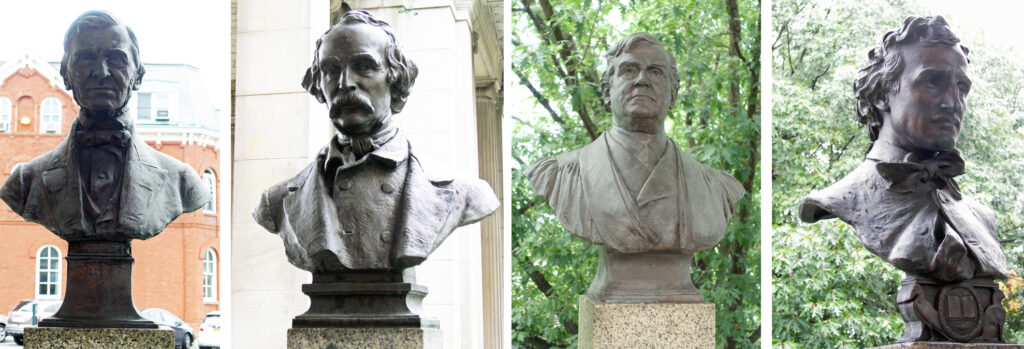
During the 1870s, French spent a month at the studio of John Quincy Adams Ward in New York City and took drawing lessons with William Rimmer. Residents of his native Concord, Massachusetts, liked his work enough to give him his first major commission, the Minute Man sculpture, to commemorate the centennial of the Battles of Lexington and Concord. As preparation, French traveled to Italy in 1875-1876.
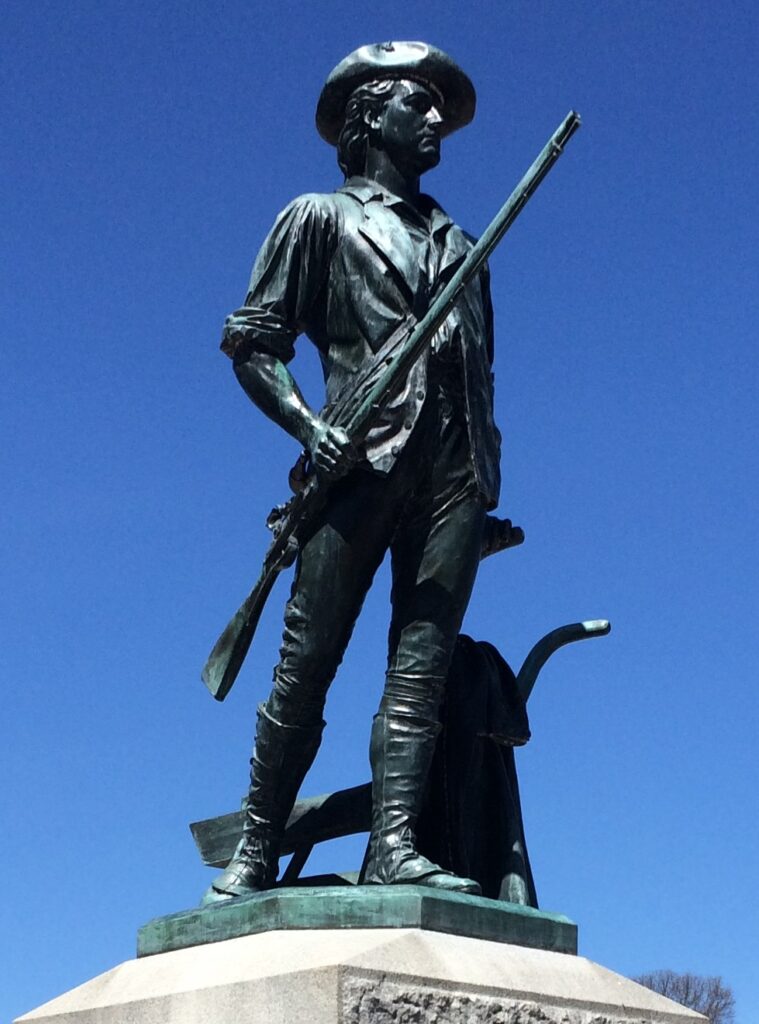
National fame
French was given several commissions for sculpture for government buildings in the 1880s. In 1886-1887, he briefly studied in Paris. Then, in 1888, he moved his studio to New York City – the sure sign of a career on the rise.
By the early 1890s, he was esteemed enough to be given one of the major commissions for the 1893 Columbian Exposition in Chicago. At sixty feet, his Republic towered over the Great Basin, facing MacMonnies’s Ship of State (which we saw last week). Like the Ship of State, Republic was a temporary creation, but was seen by 20 million or so visitors to the Exposition. The sculpture put French, too, in on the ground floor of the City Beautiful movement, as an artist capable of creating beautiful, elegant allegorical figures to any scale.
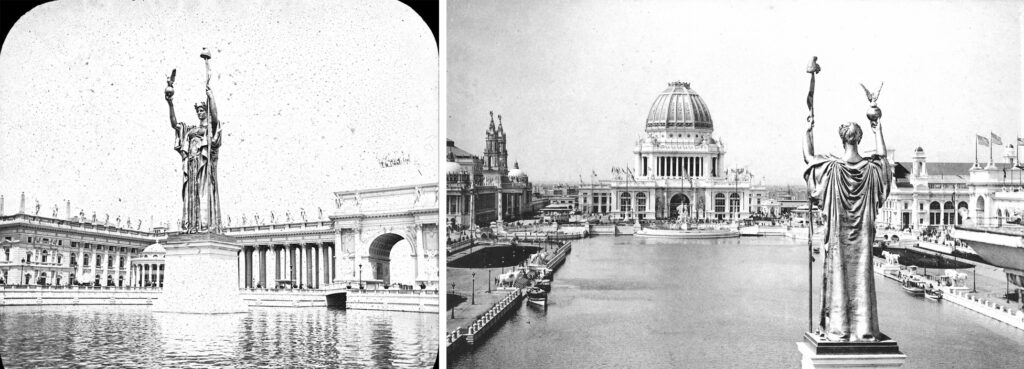
By 1897, French was splitting his time between New York City and his home and studio, Chesterwood, near Stockbridge, Massachusetts.
New York sculptures
In New York, French was commissioned ca. 1900 to help with the elaborate sculptural program of the Brooklyn Museum. With Adolph Weinman, he created the pediment whose central figures are Art and Science. On his own, he designed three of the cornice figures, representing Greek Epic Poetry, Greek Lyric Poetry, and Greek Religion. More on the Brooklyn Museum sculptures here.
French’s first major work in Manhattan was a monument to Richard Morris Hunt, who had been America’s premier architect, a leading designer of the Columbian Exposition, and an adopted New Yorker. As befits a monument to an architect who favored the Beaux Arts style, the Hunt Memorial has significant elements of classical architecture. French’s bust of Hunt and full-length figures of Sculpture and Painting were installed in 1901.
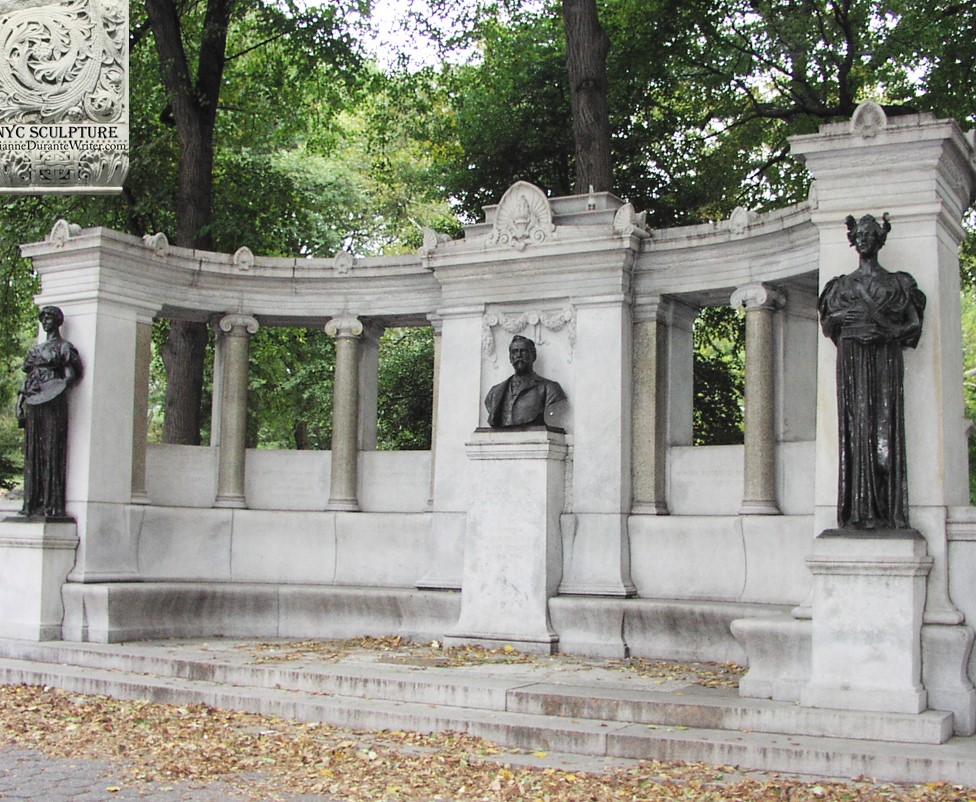
Not long afterwards, French was commissioned to create a figure of Alma Mater to sit in front of Columbia University’s Low Memorial Library, another City Beautiful building. Alma Mater, unveiled in 1903, is the sort of elegant allegorical figure at which French excelled. Dressed in an academic robe, she bears a scepter topped by a crown (Columbia began as King’s College), has an owl tucked into her skirts, and is flanked by torches representing Learning and Wisdom. More here.
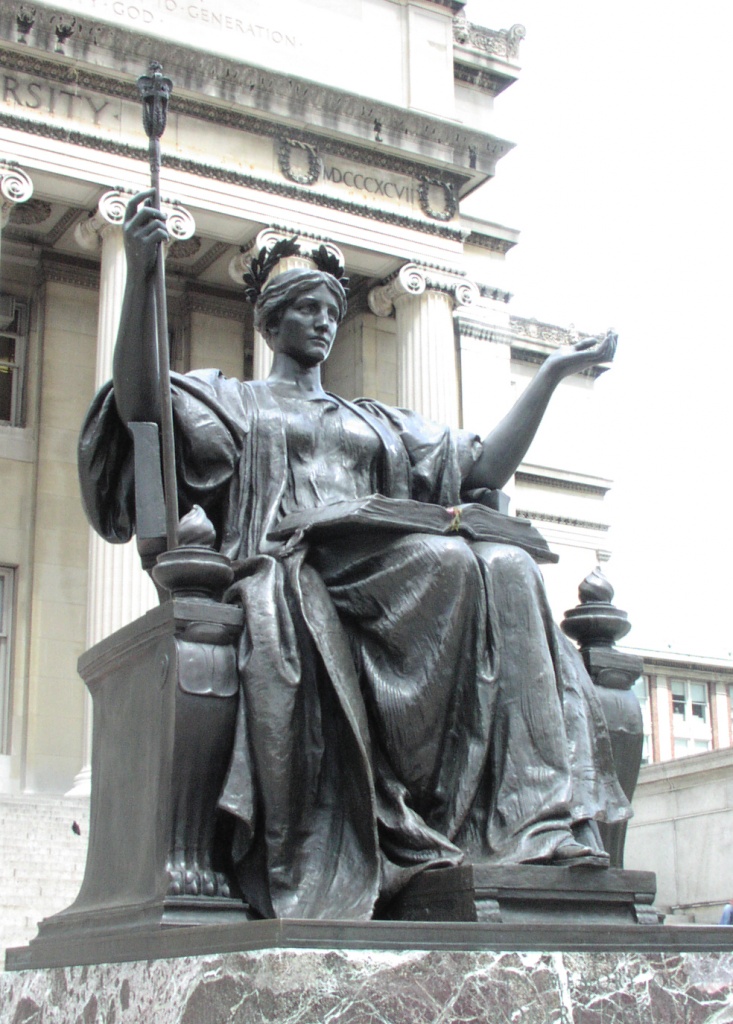
French’s largest project in New York City – and one of my favorites – is the set of four Continents in front of the Customs House at Bowling Green. Placed in 1907, they represent, left to right, Asia, America, Europe, and Africa. For more on the symbolism, see here and here.

In 1916, his allegorical figures of Manhattan and Brooklyn were set in place at the east end of the new Manhattan Bridge. There they remained, covered with dirt from passing automobiles, until 1963. When Robert Moses decided to redesign the entrance ramps at the east end of the bridge, they were moved to the front of the Brooklyn Museum. More here.

Brooklyn’s Prospect Park has a large bronze relief by French of the Marquis de Lafayette, erected in 1917 (during World War I) to honor Franco-American friendship. More here.
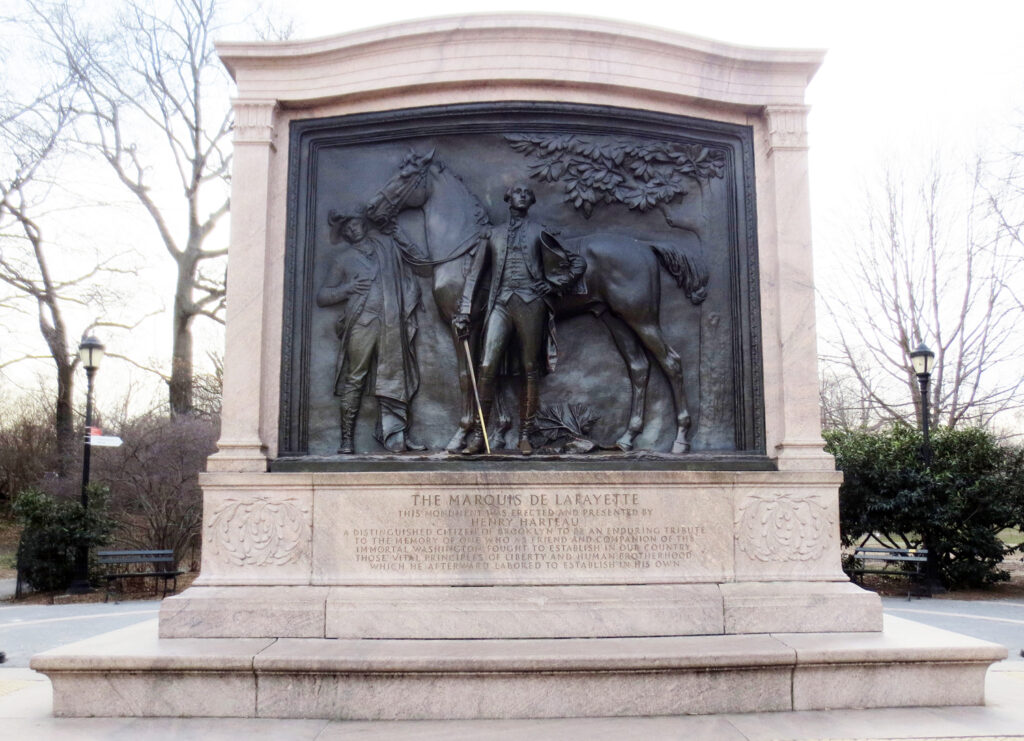
French’s works outside New York City from the 1890s to 1920 include several evocative, stunning memorials. His Milmore Memorial, also known as The Angel of Death and the Sculptor, was placed in 1893, and his Melvin Memorial, also known as Mourning Victory, was completed in 1908. Both stand in cemeteries in Massachusetts. The Metropolitan Museum (here and here) has marble copies of both that are more familiar than the originals. French’s Trask Memorial, also known as the Spirit of Life, 1915, is in Saratoga Springs; a model of the head is at Chesterwood.
Later works
In the 1920s, French did two monumental works for Washington, D.C. His winged Victory balances atop a 35-foot-high granite pillar for the First Division Memorial of the American Expeditionary Force (Infantry) which served in World War I. It’s difficult to see the figure in its present location, where it was unveiled in 1924, but Chesterwood has a beautiful model of the head. The monument is in President’s Park, south of the Executive Office Building.
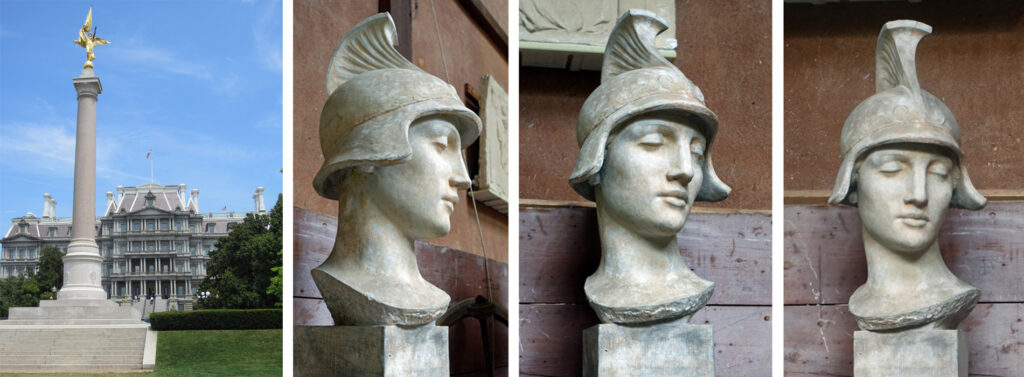
French’s most recognized and reproduced work is, of course, the seated Lincoln in the Lincoln Memorial, dedicated in 1922. It’s 19 feet high. More here, with models from Chesterwood.
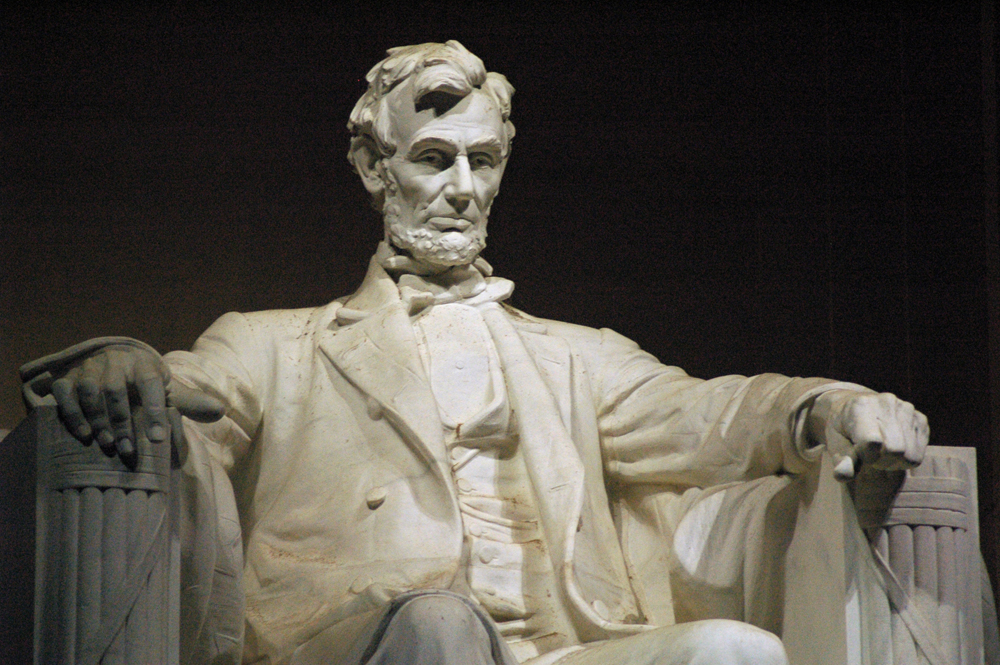
In Sunnyside, just north of New York City, stands a memorial to the writer Washington Irving that was dedicated in 1927. For this one, French created another distinctive bust and added relief figures of two of Washington’s most famous characters: Boabdil from Tales of the Alhambra, and the hero of “Rip Van Winkle”. More here.
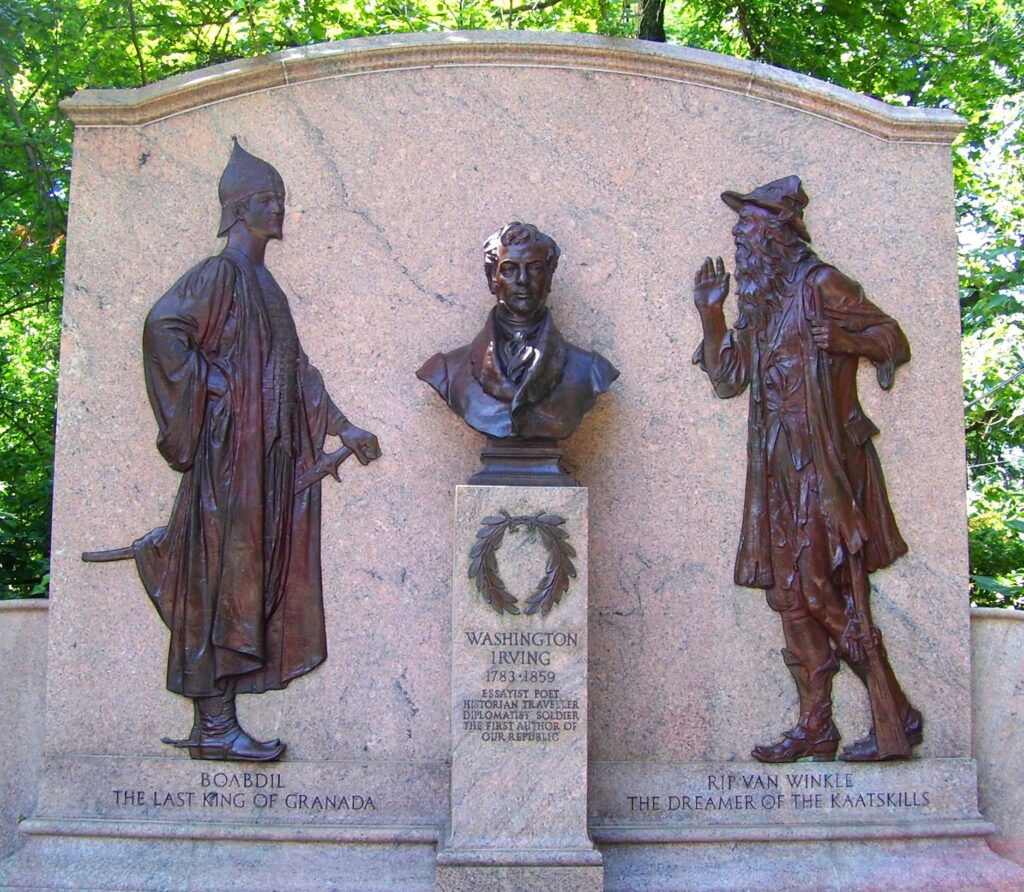
When French died, he was at work on a sculpture that he was creating for his own satisfaction: Andromeda. It’s still in his studio.
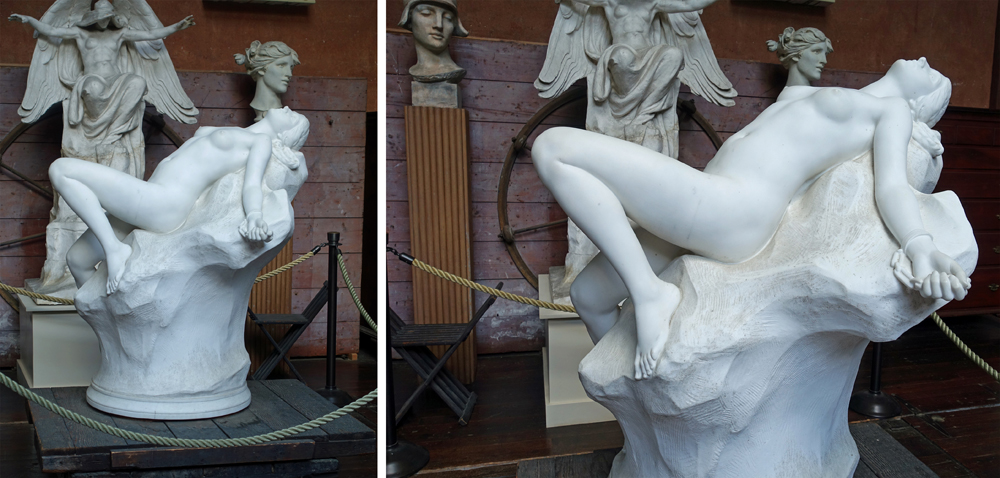
Evaluation of D.C. French
After the death of Saint Gaudens in 1907, French was the foremost sculptor in the United States. His studio assistants included many of the notable sculptors of the early twentieth century, all of whom created significant works in New York City: Adolph Weinman, Evelyn B. Longman, Carl Heber, Paul Manship, and Edmond T. Quinn.
French is important not just as a teacher, of course, but for the type of sculpture he produced. He specialized in allegorical figures that were calm and dignified. Calm and dignified is not always what you need from a work of art: sometimes it’s the courage of Saint Gaudens’s Sherman or the effervescent joy of MacMonnies’s Bacchante with Infant Faun. But if calm and dignity is what you need, it’s difficult to find a better source than Daniel Chester French.
More
- My go-to book on Daniel Chester French is Michael Richman’s Daniel Chester French: An American Sculptor.
- My Instagram account shows every outdoor sculpture in New York City, since in chronological order, with a short blurb on the subject and/or artist of each.
- In Getting More Enjoyment from Sculpture You Love, I demonstrate a method for looking at sculptures in detail, in depth, and on your own. Learn to enjoy your favorite sculptures more, and find new favorites. Available on Amazon in print and Kindle formats. More here.
- Want wonderful art delivered weekly to your inbox? Check out my free Sunday Recommendations list and my Patreon page (free or by subscription): details here.
